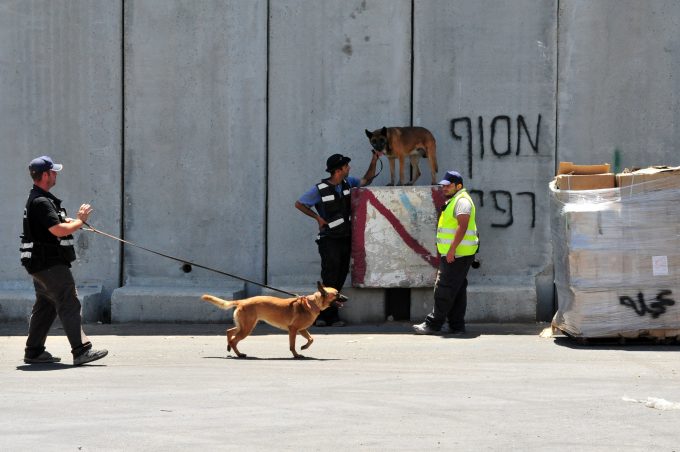ACF Podcast: Tales from TIACA – what are the hot topics?
Host and news reporter Charlotte Goldstone interviews a plethora of supply chain industry experts in ...
AMZN: PARTNERSHIP EXTENDEDWMT: ON A ROLLDSV: SLOW START AAPL: LEGALUPS: MULTI-MILLION PENALTY FOR UNFAIR EARNINGS DISCLOSUREWTC: PUNISHEDVW: UNDER PRESSUREKNIN: APAC LEADERSHIP WATCHZIM: TAKING PROFITPEP: MINOR HOLDINGS CONSOLIDATIONDHL: GREEN DEALBA: WIND OF CHANGEMAERSK: BULLISH CALL
AMZN: PARTNERSHIP EXTENDEDWMT: ON A ROLLDSV: SLOW START AAPL: LEGALUPS: MULTI-MILLION PENALTY FOR UNFAIR EARNINGS DISCLOSUREWTC: PUNISHEDVW: UNDER PRESSUREKNIN: APAC LEADERSHIP WATCHZIM: TAKING PROFITPEP: MINOR HOLDINGS CONSOLIDATIONDHL: GREEN DEALBA: WIND OF CHANGEMAERSK: BULLISH CALL

The US Airforwarders Association (AfA) is taking the lead in a push to use more sniffer dogs to secure air cargo supply chains.
The AfA is talking with a variety of players to establish an interest group to lobby US policymakers to permit canines from private providers to screen air cargo.
The US Transportation Security Agency (TSA) had allocated some sniffer dogs to air cargo, but over time they have been shifted to passenger terminals, a trend probably accelerated by recent incidents, noted AfA executive director Brandon Fried.
“We are advocating the use of private canines at certified screening facilities. The TSA would validate and audit the programme, but not be responsible for training and upkeep,” he said.
The plan is to bring enough stakeholders together, then draft a white paper. Then the coalition can approach members of the legislature to push for funding to enable the TSA to set up and run the programme.
“We made a presentation to the TSA,” Mr Fried said. The agency has been receptive, but signalled that it needed resources to map out such a programme and recruit personnel to validate and inspect private canine screening providers.”
A number of industry executives have called for an increase in the use of sniffer dogs for security screening. However, doubts were raised in 2014, when UK authorities banned the RasCargoO system, which took air samples from shipments to dogs in a remote location for inspection.
The authorities found accuracy dropped sharply when conditions changed. The ban angered air cargo operators in the UK who saw traffic shift to the Netherlands, which continues to use RasCargoO methodology.
Chris Connell, AfA chairman and president of Commodity Forwarders, does not think that the RasCargO system has failed.
“We heard that in the UK the filters were changed at short notice, so there was no time to recondition the dogs for the new filters. The dogs were conditioned to the filters in use before,” he said.
Both he and Mr Fried stressed that the nascent AfA-led coalition of forwarders, private canine providers and shippers was not advocating any particular canine inspection method.
“We are agnostic what kind of canine approach is sanctioned. If the TSA says that taking air samples is not valid, then so be it,” commented Mr Fried.
Mr Connell reckons that the RasCargO model shows promise for the long term, but that it will be easier to gain recognition for other methods first.
“We feel this [canine screening] is a tool that needs to come to fruition now,” said Mr Fried “We think it is a cost-effective solution.” He noted that screening technology was expensive.
Mr Connell said government-mandated rises in the minimum wage would mean higher screening costs, further increasing the appeal of sniffer dogs.
He emphasised, though, that the plan was not to replace technology with sniffer dogs – rather, they should be another tool supplementing established methods.
“The vision is not a dog in every freight forwarder’s warehouse,” said Mr Fried. “It’s a method we see under the umbrella of the Certified Screening Programme, and not something that will be available to outsiders.”
Mr Connell reckons that privately operated sniffer dogs would initially be deployed in markets with high volumes.
It will be a while before the initiative goes at full speed, he says.
We are probably not going to push this too aggressively in an election year.”
Comment on this article